Art & Exhibitions
Leonardo da Vinci Hid Invisible Drawings in His Sketches. Now High-Tech Scanners Have Brought Them to Light
"Leonardo da Vinci: A Life in Drawing," which will appear across the UK in 2019, has some surprises.
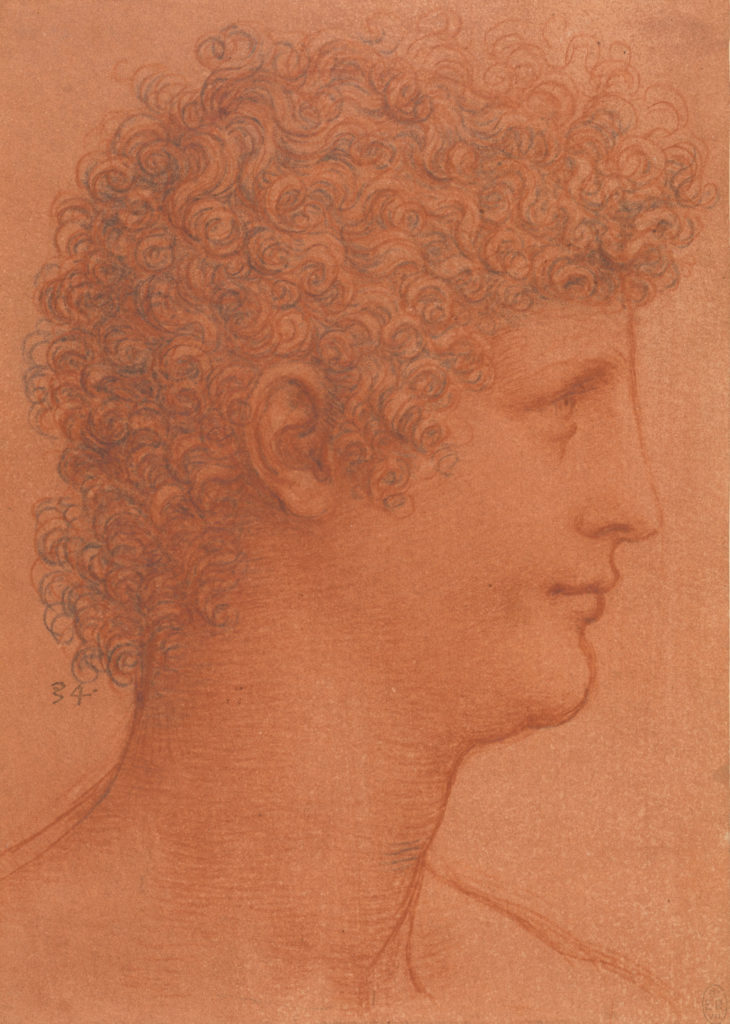
"Leonardo da Vinci: A Life in Drawing," which will appear across the UK in 2019, has some surprises.

Kate Brown

To mark the 500th anniversary of the Leonardo da Vinci’s death, a collection of his drawings are going on a UK tour next year. But if you think that “Leonardo da Vinci: A Life in Drawing,” as the show is called, is just a Renaissance man greatest hits tour, think again. There will be surprises.
Some 144 extraordinary illustrated works will be displayed in 12 simultaneous exhibitions at various cities across Britain. These exhibitions will open in tandem in February 2019, before being brought together to be exhibited that May at the the Queen’s Gallery at Buckingham Palace. All in all, there will be a total of 200 sheets on display there, making it the largest exhibition of the artist’s work in over 65 years.
The revelations in the show come thanks to modern technology. Infrared light is used to show hidden drawings and alternative versions of Leonado’s sketches.
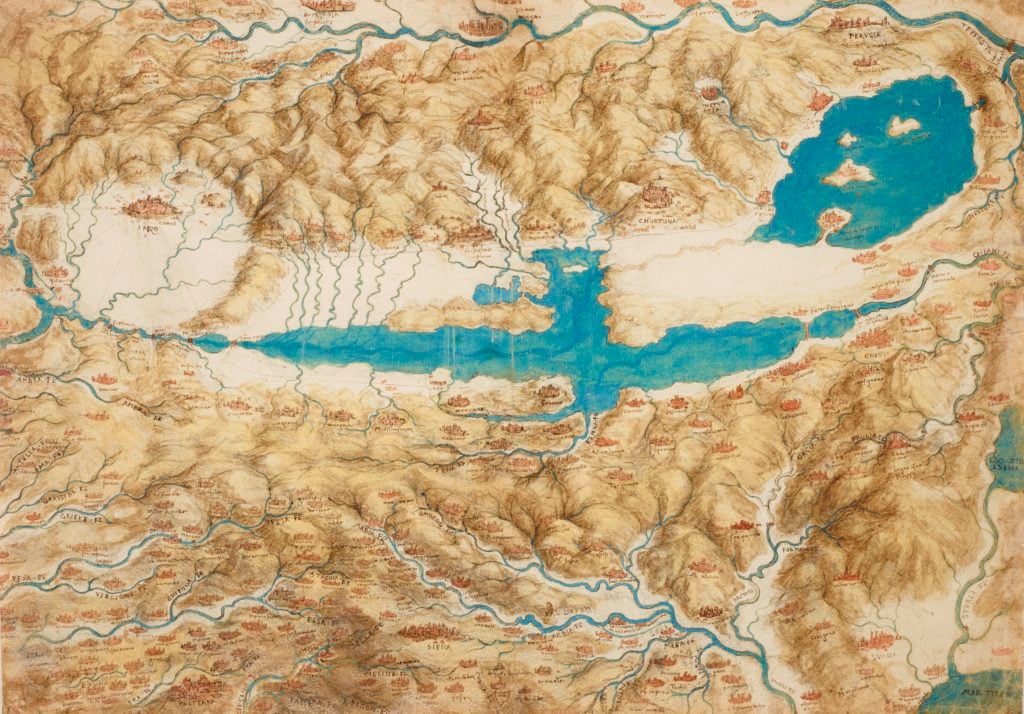
Leonardo da Vinci’s A Map of the Valdichiana (c.1503–4). Courtesy the Royal Collection Trust.
For instance, you discover how Studies of water was built up in stages (see below). The underlying structure of water currents in chalk are rendered visible by infrared for the first time, showing that a much simpler design existed before da Vinci added little rosettes of bubbles to the composition.
Most striking of all are two blank sheets of paper that are now known to hold invisible studies for hands. High-energy X-ray fluorescence has revealed the sketches called Studies of hands for the Adoration of the Magi.
The technology also clarifies how these incredible drawings managed to vanish in plain sight over the centuries. Because of the high content of copper in da Vinci’s metal stylus, a chemical reaction transformed the lines into transparent copper salt.
“As so much of his life’s work was unrealized or destroyed, Leonardo’s greatest achievements survive only in his drawings and manuscripts,” says the Royal Collection Trust in their official statement. It’s true: His incredible inventions, sculptures, and buildings do not survive beyond their masterfully illustrated prototypes or sketches.
The exhibition will also display various examples of drawing materials Leonardo used, including pen and ink, red and black chalks, watercolour and metalpoint.
See the before and after images of Leonardo’s drawings below.
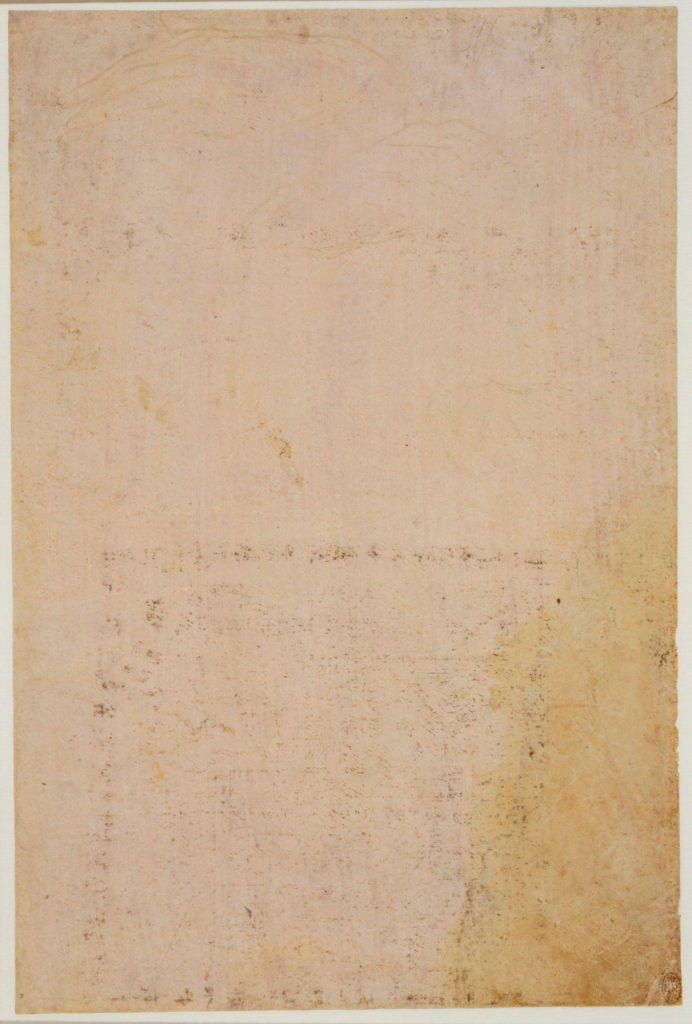
Leonardo da Vinci’s Studies of hands for the Adoration of the Magi Sheet 1 (c.1481), as seen by the naked eye. Courtesy Royal Collection Trust/Her Majesty Queen Elizabeth II.
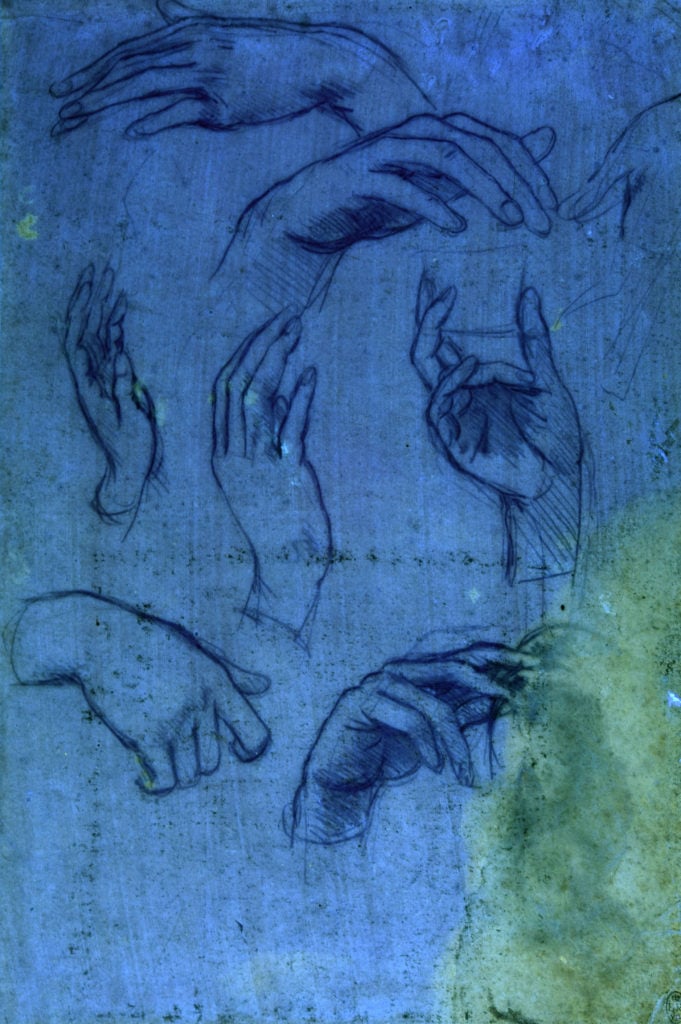
Leonardo da Vinci’s Studies of hands for the Adoration of the Magi Sheet 1 (c.1481), under ultraviolet light. Courtesy Royal Collection Trust/Her Majesty Queen Elizabeth II.
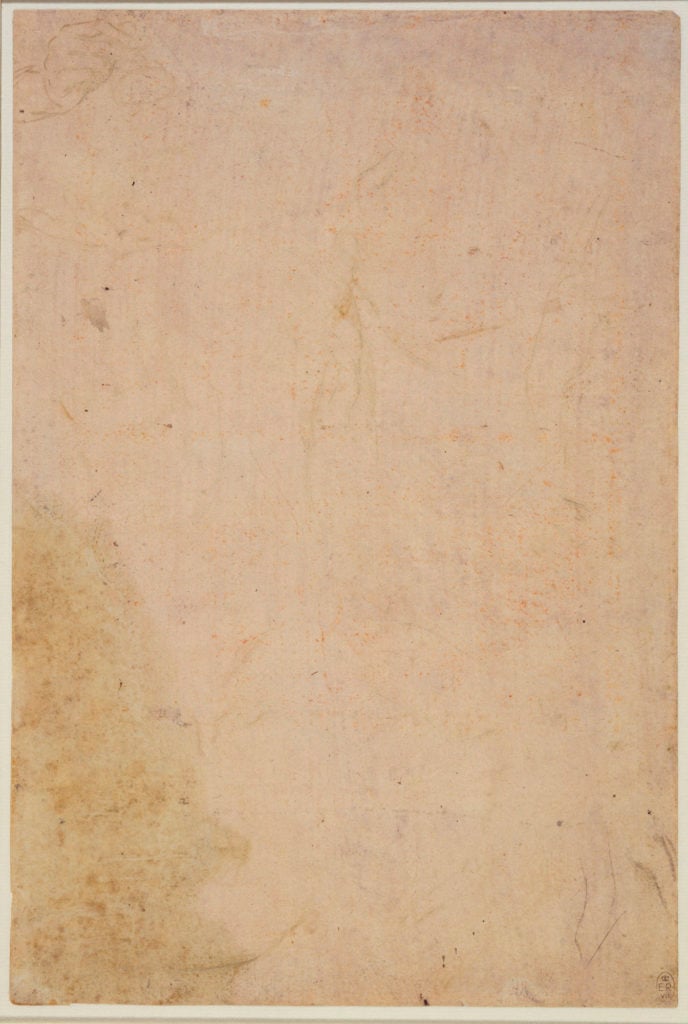
Leonardo da Vinci’s Studies of hands for the Adoration of the Magi Sheet 2 (c.1481), as seen by the naked eye. Courtesy Royal Collection Trust/Her Majesty Queen Elizabeth II.
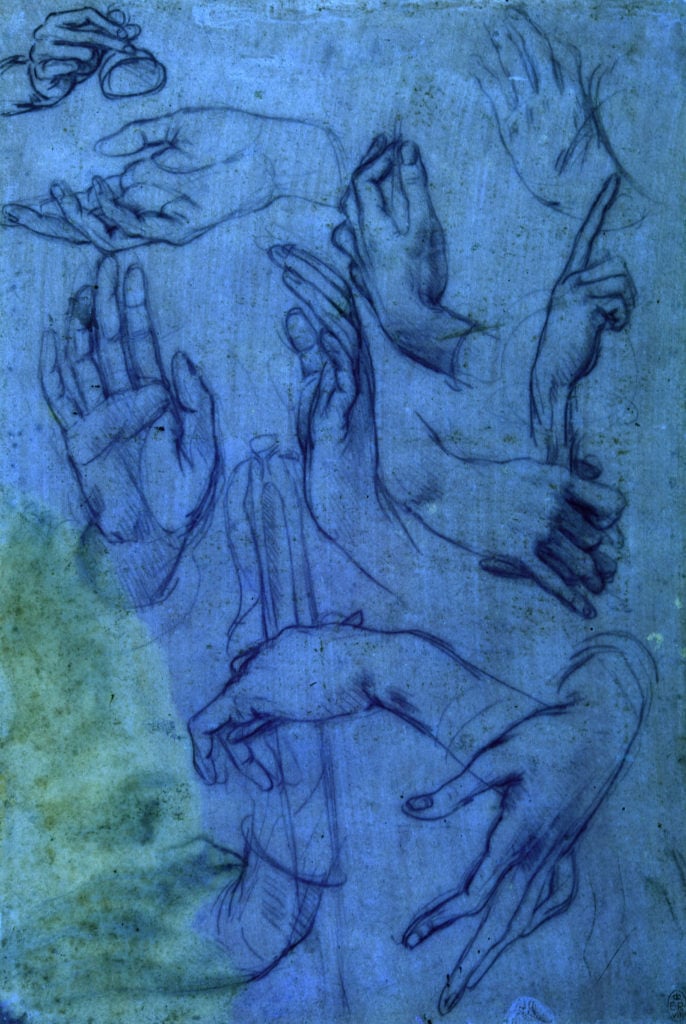
Leonardo da Vinci’s Studies of hands for the Adoration of the Magi Sheet 2 (c.1481), under ultraviolet light. Courtesy Royal Collection Trust/Her Majesty Queen Elizabeth II.
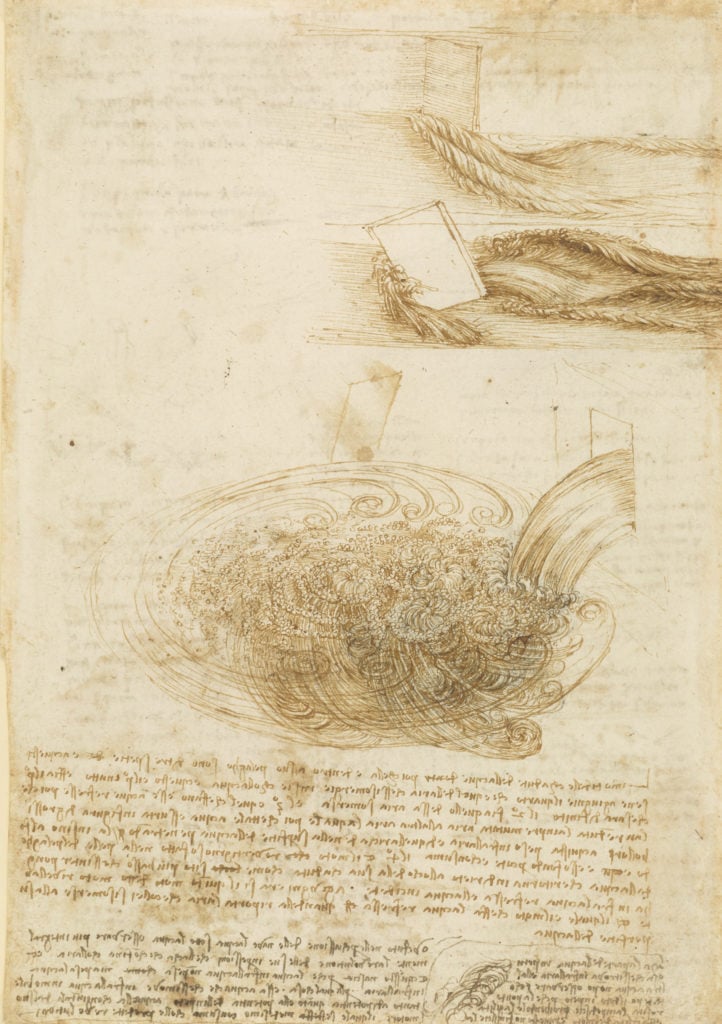
Leonardo da Vinci’s Studies of water (c.1510–12) as seen by the naked eye. Courtesy Royal Collection Trust/Her Majesty Queen Elizabeth II.
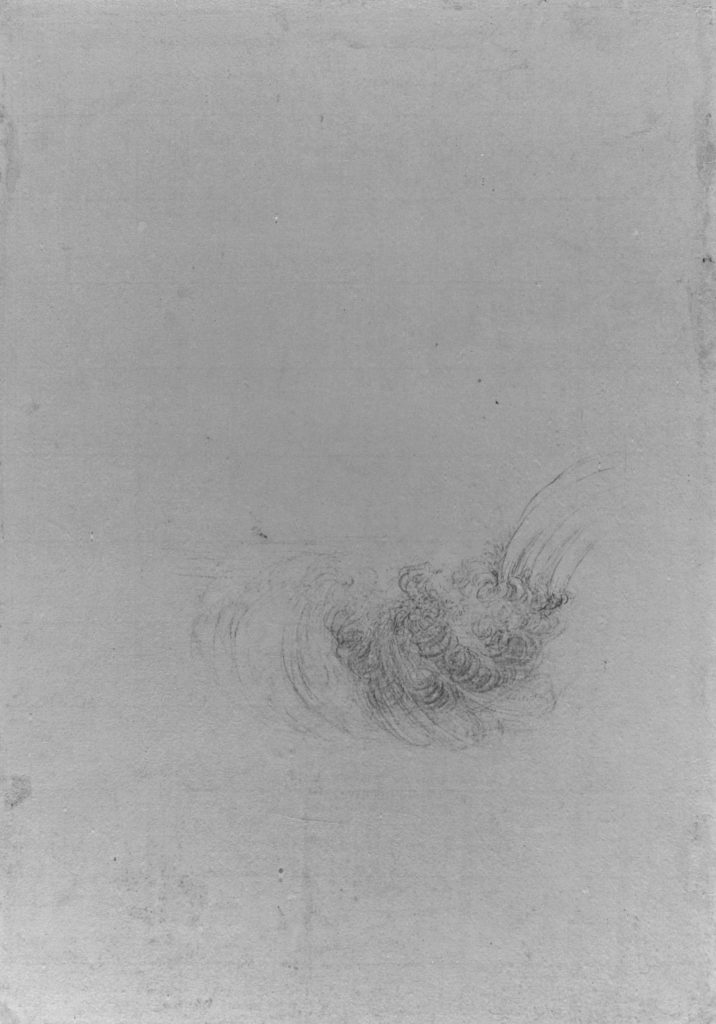
Leonardo da Vinci’s Studies of water (c.1510–12) under infrared light. Courtesy Royal Collection Trust/Her Majesty Queen Elizabeth II.
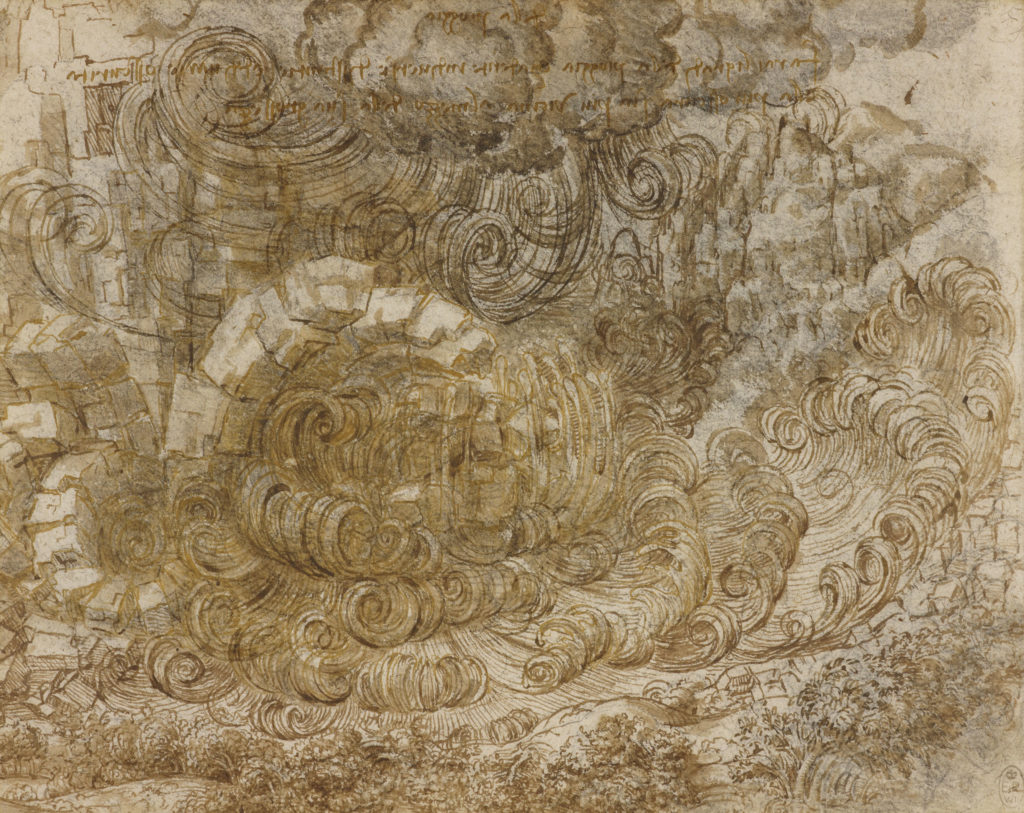
Leonardo da Vinci’s A deluge (c.1517–18) as seen by the naked eye. Courtesy Royal Collection Trust/Her Majesty Queen Elizabeth II.
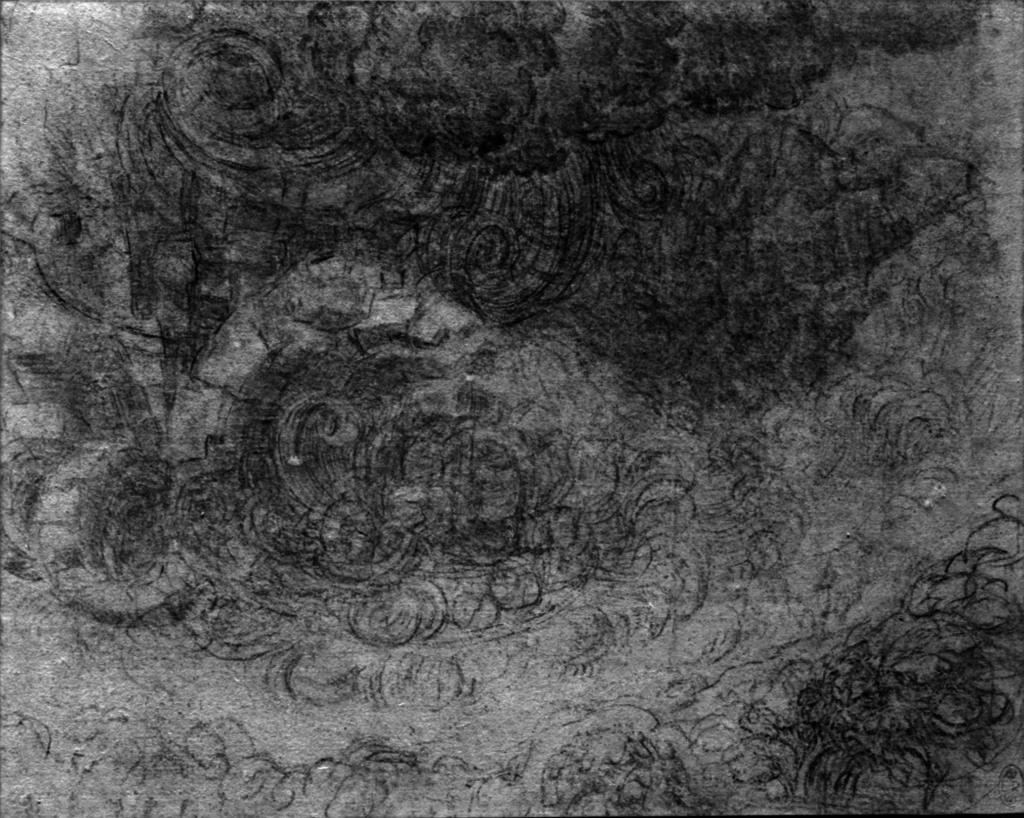
Leonardo da Vinci’s A deluge (c.1517–18) under infrared light. Courtesy Royal Collection Trust/Her Majesty Queen Elizabeth II.
“Leonardo da Vinci: A Life in Drawing” will run from February 1 through May 6, 2019 at various museums in the UK. The exhibition at Buckingham Palace will be on view from May 24 until October 13, 2019, before 80 drawings travel to Her Majesty’s Palace of Holyroodhouse, Edinburgh in November 2019.